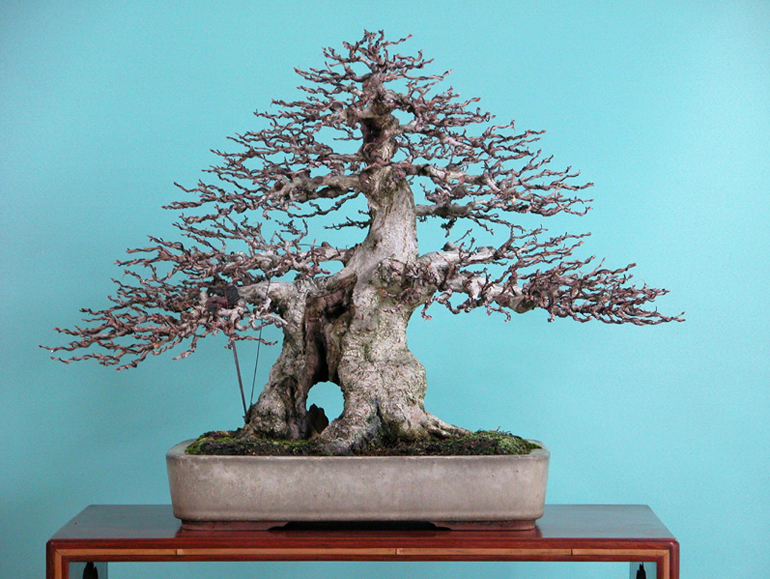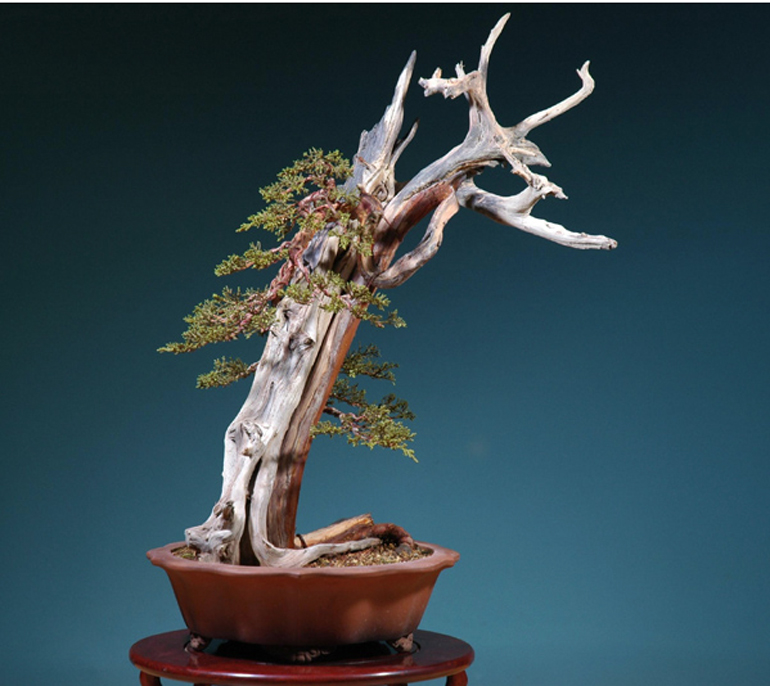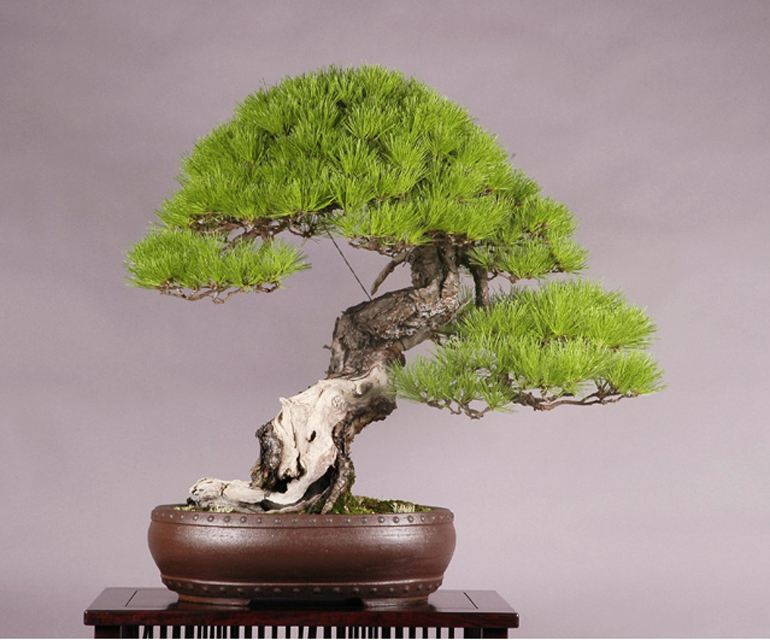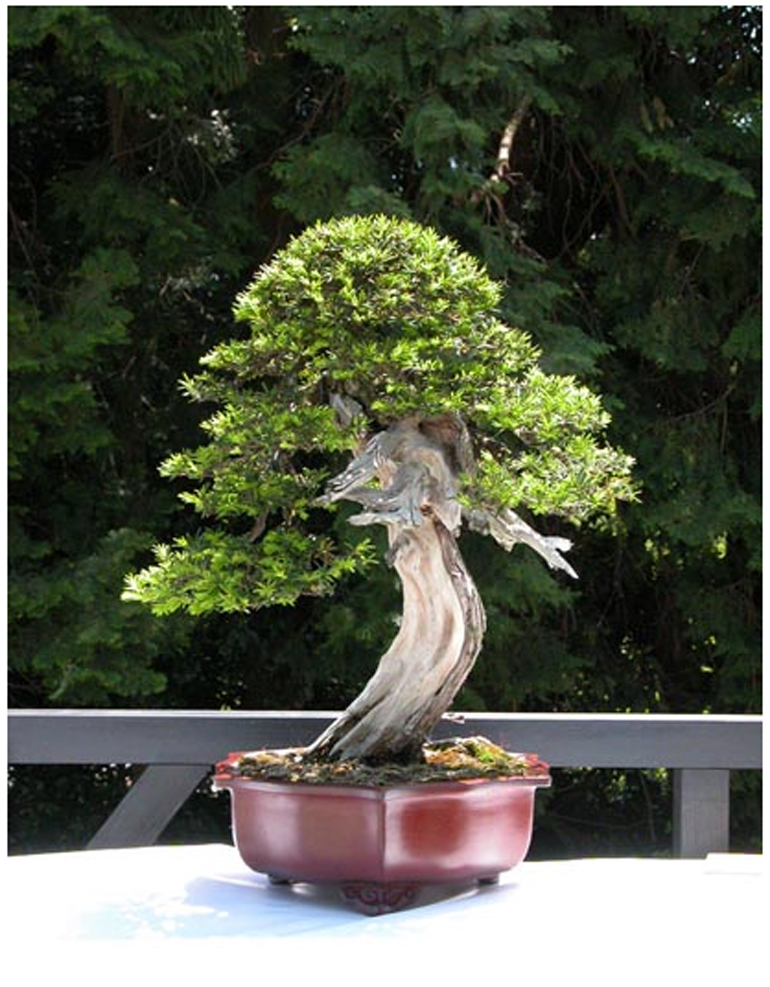Calligraphy anyone? I think this is the third time we've shown this astonishingly eccentric two headed monster, but it's been about four years, which means many of you haven't seen it, and I think everyone should have at least one chance. I don't know its full history, but I do know that it appeared on The Art of Bonsai Project in a post titled The Bonsai of Mario Komsta, as did all the photos shown in this post. Yixing pot.
Once again it’s time for Mario Komsta (Super Mario), one of Europe’s and the world’s new wave of younger bonsai artists. Many of these up and comers, including Mario, have apprenticed in Japan. The skills and sensibilities they are bringing back to the West are a big reason for the relatively recent dramatic progress in Western bonsai.
All the photos shown here are borrowed from The Art of Bonsai Project.

If this Hornbeam were a full size tree, you might be able to walk through the hole. Tokoname pot.

Another Shimpaku, this time with antlers. It may not be as eccentric as the one above, but it's pretty distinctive. You might notice that it lacks some of the more conventional bonsai features (taper, or more or less evenly radiant surface roots for example), but to my eye it doesn't matter. Yixing pot.

This Japanese red pine (Pinus densiflora) is a more or less a conventional informal upright bonsai with great movement and compelling deadwood that looks like it has been freshly painted with lime sulfur (deadwood is less common on pines than junipers as it tends to rot faster which means it requires more effort to keep it). Tokoname pot.
Japanese white pine. Another informal upright with deadwood and another hole. From this perspective the deadwood doesn't look aged, so you might imagine that the carving is fresh. Yixing pot.

More deadwood, this time more aged. This one is a Japanese yew (Taxus bacatta). The pot is a Tokoname.
The Japanese yew is Taxus Cuspidata. Taxus Baccata is the European Yew. It is not easy to be certain of the identity of this specimen from the (somewhat fuzzy) photograph. Nevertheless, a beautiful bonsai.
Thanks Stuart,
If I had a nickle for every mistake…